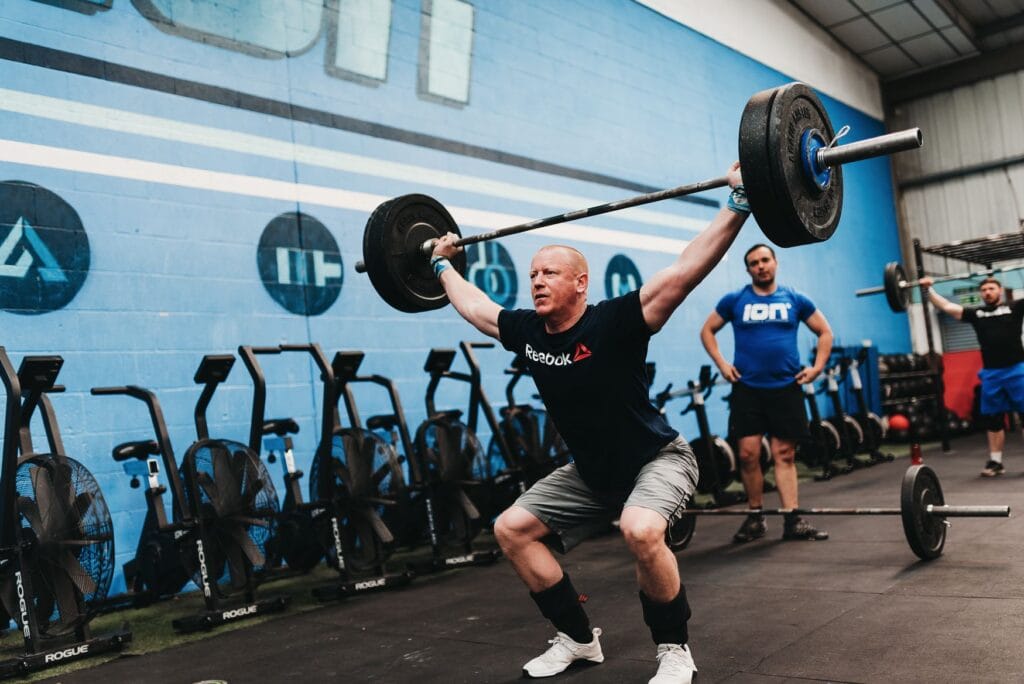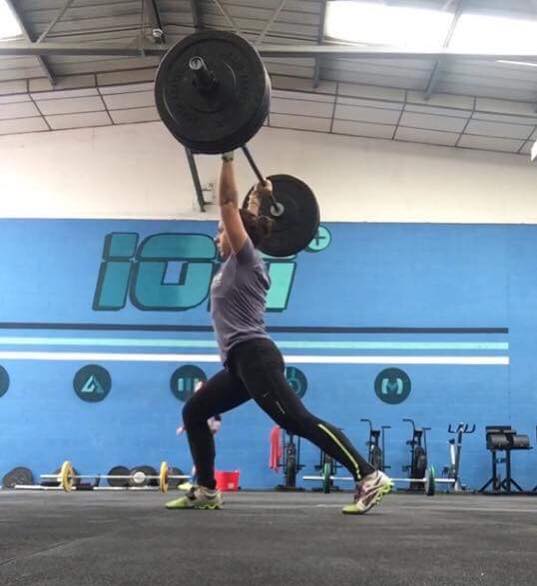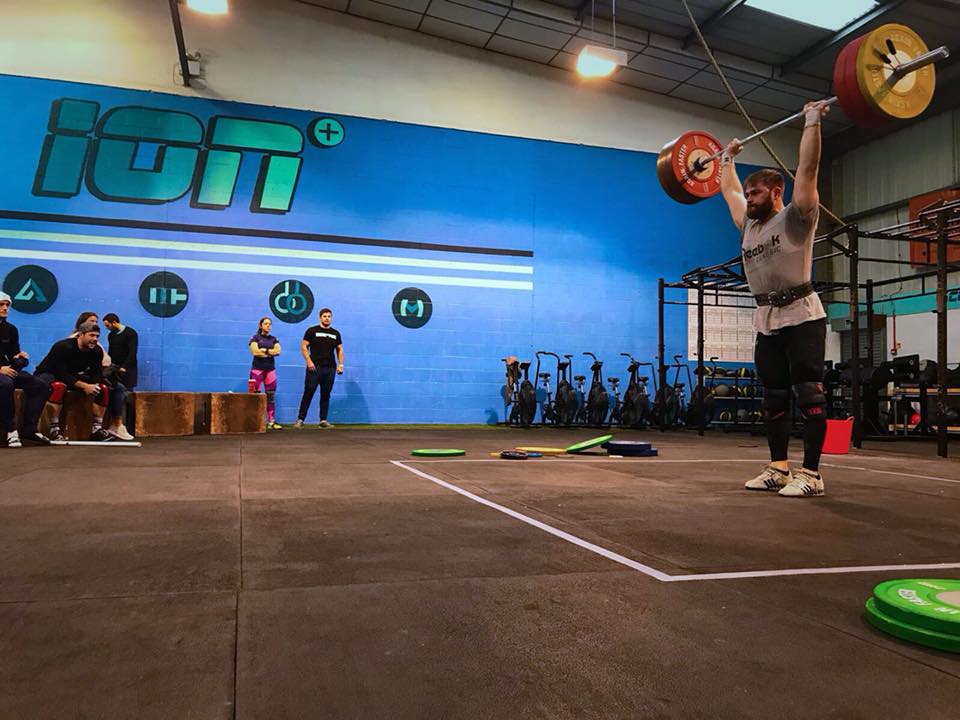Simple answer is once the technique has been mastered, Olympic Lifting is FUN!
Olympic Lifting incorporates many components of fitness that when performed correctly become highly effective and keeps your training time as efficient as possible. So, let’s take a look at the key components of fitness and how Olympic Weightlifting fits into them…
KEY COMPONENTS OF FITNESS
1. POWER
Power is your muscles ability to exert maximum force in minimum amount of time.
Power is the product of strength and speed, so when using the Olympic Lifts these qualities are continually being developed. Becoming more powerful helps you to become more efficient in your movements. Fun fact – Olympic weightlifters have some of the highest vertical leaps of all athletes. So, if you’re struggling with your box jumps, it might be worth incorporating some Oly lifts into your routine.
2. STRENGTH
Strength is the amount of force your muscles can apply against a resistance.
Olympic lifts can help you to dramatically increase your total-body strength. It is worth mentioning that exercises like snatch, and clean & jerk are great for improving core strength and stability, which is essential for staying injury free. In other words, Olympic weightlifting leaves no muscle untouched, and therefore, is a great addition to any fitness programme.
3. SPEED
Speed is the ability to put your body parts into motion as quickly as possible.
The speed of Olympic lifts requires you to recruit your fast-twitch muscle fibre. This type of fibre fire anaerobically and are also incorporated during sprints. That’s why the fastest people in the world incorporate Oly lifts to gain that extra edge.
4. FLEXIBILITY
Flexibility stands for the range of motion at a given joint.
It is a physical quality that is required and developed through the lifts. For example, to be able to remain upright in the catch position of a clean, an individual must develop the ability to have their elbows up in the front rack position. This elbow position is critical to keeping their torso upright in order to allow the bar to remain on the shelf of their deltoids to be able to stand the bar up.
5. COORDINATION, AGILITY AND ACCURACY
Coordination enables you to combine various distinct movement patterns into a single movement.
Agility is the ability to change your body’s position quickly and with control.
Accuracy is the ability to control the movement in a given direction or at a particular intensity.
So how do all these components come together in Olympic lifts? As they are complex, full body, multi joint, compound exercises the need to develop our neurological components of fitness such as Coordination, Agility and Accuracy are hugely important to synchronise the different stages of the lifts. This is what makes the lift more fluid and efficient.
6. BALANCE
Balance enables you to maintain the body’s centre of mass in relation to its support base.
In Olympic lifts, balance is required throughout as it’s important to find positions that allow individuals to produce the most force through the floor, as well as during the catch phases. In addition, you need a good balance to find a solid base of support to be able to execute the lift fully.
7. CARDIOVASCULAR/RESPIRATORY ENDURANCE
Cardiovascular endurance is your body’s ability to collect, process, and deliver oxygen. It’s an important element to becoming a well-rounded athlete and perform efficiently during the most gruelling WODs.
Granted, unless you do a lot of high rep Olympic Lifting work, then the demands will be limited. If you are a CrossFitter, then workouts like Grace (30 Clean and Jerks for time) will place demands on this physical quality as doing high repetitions of lifts will get the heart and lungs going a lot more than lower reps!
However, if you are looking to focus specifically on endurance, it’s recommended to use other tactics such as running or using a rower/bike.
8. STAMINA
Physical stamina is your body’s ability to process, deliver, store and utilise energy for long periods of time.
In Olympic Weightlifting this is shown in the lifts rep after rep. As we continue to do more repetitions, whether its 5 x 3s or 3 x 2s, effort is required. If you have poor levels of stamina, then performing any workouts with any type of volume you will struggle. So, the more you practice this workout, the better you get at it. As a result, your stamina improves considerably as well.
So having broken down the 10 components of Fitness and how they are utilised during the Olympic Lifts, hopefully you will have a firm idea of why we do use them in our daily classes at ION Strength and Conditioning, and why we are focused on developing you technically before adding heavy weights.
Key Tips For Getting Better at Olympic Lifts
When learning any new exercise in the gym the order of progression and focus will be as follows:
1. Movement and Mechanics – take the time to learn the technique, spend time with a coach to have a firm understanding of the exercise to enable individuals to perform efficiently, effectively and safely.
2. Consistency – practice, practice, and practice. Learn the skill and perform it frequently, engraining the technique rep after rep.
3. Intensity – once you’ve learnt to perform the exercise correctly, only then do you add intensity to the movement. In most cases, adding intensity means adding more load.
Are you interested in learning more about Olympic lifts? Join us at our weekly Barbell Club, which runs every Saturday at 10AM.
And if you prefer more specialised approach, we offer individual or small group Olympic Weightlifting coaching sessions. Get in touch with our coaches if you would like to learn the correct techniques in a structured and more detailed process.




